Peter Lopez Jr.'s Blog: Xulon Press Blog , page 8
January 27, 2024
“Unraveled” by Deanna Lorea is Our January Book of the Month
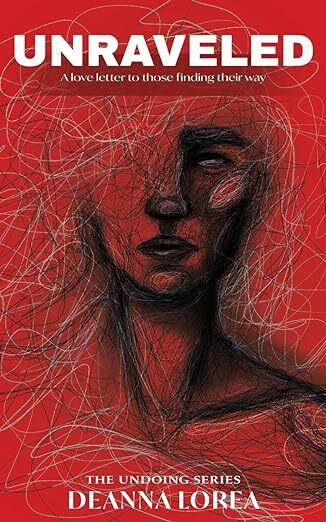 [image error] [image error]
[image error] [image error] As the new year begins, we are excited to announce our Book of the Month for January 2024 is Unraveled by Deanna Lorea. But what exactly is a Book of the Month, and why are we so thrilled about this particular selection?
The Xulon Press “Book of the Month” is our staff’s pick that we believe will captivate our readers and encourage them to explore new authors and genres. Each month, our team carefully chooses a book that we think will engage and inspire our community, and we also share an interview with the author to add their insight into the writing and self-publishing process.
To learn more about Unraveled and its author, we sat down with Deanna Lornea to chat about her inspiration for the book, her writing process, and what she hopes readers will take away from her work.
What inspired you to write Unraveled?A: As I was documenting intense moments [with the Lord], I had no idea that a year later the Lord would tell me to release my book. I had no idea what He was talking about. I wasn’t writing a book. Then I went back to see what I had been writing over the last year and thirty-four chapters were hidden in my Google Docs folder. Thirty-four chapters [that were] written all from the POV [point-of-view] of the Father to me. It was a love letter.
The funny thing is there was nothing I did to make this book come to be other than document what He said to me. I didn’t have to perfect what He was saying. I only had to write it down and observe. That little red book is a miracle for me just as much as it is for the reader.
How long did it take you to write your book?A: I don’t necessarily look at it like, “how long did it take me to write it” because I didn’t know I was writing it as it was being written. This book came to be in over a year, through my own unraveling.
Were there any challenges you faced while writing this book, and if so, how did you overcome them?A: I wouldn’t say there were any challenges. To be honest, when these moments with the Lord appeared, I wasn’t ready. I would scramble over to my phone or iPad and type up what seemed to flow through me like water. I didn’t want to miss a word of what He was revealing. I’ve never had experiences like this before. It might be similar to someone who is divinely inspired to write a song. The words just come to them. I didn’t have to think about it, they just flowed.
I knew it wasn’t from me because I overanalyze my thoughts. When I write for myself, I’ll write a sentence and then reread it one hundred times before moving on. This was different. I couldn’t keep up with how fast the words went from my heart to the paper—or Notes app on my iPhone.
Was there a specific part of your self-publishing journey that you enjoyed more than you thought you would?A: I really loved designing the cover. I didn’t know I had a joy for those kinds of things. It’s funny how following the Lord will bring out artistry in you that you didn’t know you possessed.
What do you hope readers will take away from your book?A: My prayer for this book is that every reader knows that God desires them deeply. There’s so much in the world that tells us what to do or what we are doing is wrong, and the Lord has kept me in the place of His love. I wanted to move on from that place to start something new and He always brings me back. I believe it’s because He knows what it provides for me—rest and peace. This is what I want for every reader. I want to give rest and peace to every reader like the Lord has given me rest and peace. I promised Him that everything He gave to me I would pour out to others.
Tell us a little bit about how you’ve marketed your book since its release.A: I love social media. That’s where I market my book. If you find me on social @dahter_ you’ll see that I don’t follow anyone. This is on purpose. It’s not what I’m on there for. [I’m] only to pour out to others what God has given me.
Shortly after the Lord told me to publish Unraveled, He told me to start speaking online about our private relationship. That was terrifying to me because my relationship with the Lord is so personal and pure. Putting myself out there meant exposure and vulnerability.
[I didn’t have an] audience to purchase the book [and] nobody to read it other than my few friends and family.
I made three videos and to my surprise no views populated—along with zero followers. I felt stupid because I was talking to no one. But He told me to speak. It was the fourth video that went viral with over eight million views across two platforms. In three months, a group of people gathered who just wanted to know the Lord. This is who He had in mind for Unraveled. In just three months, [my] three social platforms totaled over 300,000 followers.
A year later, my platforms have a little over half a million followers with millions of views that have heard something about the heart of God. Unraveled is a miracle and it’s been purchased in countries I don’t even know how to pronounce. The Lord told me this book would be global, but I had no idea it would be this quickly!
About Deanna Lorea
Deanna Lorea started intentionally writing two years ago. She’d have intense moments with the Lord and didn’t know what to do with them other than write them down. That’s how Unraveled came into existence. In her spare time, Lorea loves to travel. She’s lived in Japan, South Korea, Germany, and six U.S. states. She loves to ride her bike on the beach, pineapple coconut ice cream, and getting lost in a good story. Visit https://dahter.com to learn more and contact Deanna Lorea.
Where to Buy Unraveled AmazonB&NXulon Press BookstoreConnect with Deanna Lorea
AmazonB&NXulon Press BookstoreConnect with Deanna LoreaInstagram: @dahter
TikTok: @dahter
YouTube: @dahter_
The post “Unraveled” by Deanna Lorea is Our January Book of the Month appeared first on Xulon Press.
January 26, 2024
“Unraveled” by Deanna Lorea is our January 2024 Book of the Month
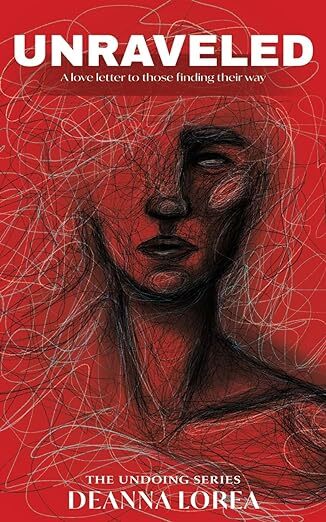
We are excited to announce our Book of the Month for January 2024 is Unraveled by Deanna Lorea. But what exactly is a Book of the Month, and why are we so thrilled about this particular selection?
A “Book of the Month” is our staff’s pick that we believe will captivate our readers and encourage them to explore new authors and genres. Each month, our team carefully chooses a book that we think will engage and inspire our community, and we also share an interview with the author to add their insight into the writing and self-publishing process.
To learn more about Unraveled and its author, we sat down with Deanna Lorea to chat about her inspiration for the book, her writing process, and what she hopes readers will take away from her work.
What inspired you to write Unraveled?A: As I was documenting intense moments [with the Lord], I had no idea that a year later the Lord would tell me to release my book. I had no idea what He was talking about. I wasn’t writing a book. Then I went back to see what I had been writing over the last year and thirty-four chapters were hidden in my Google Docs folder. Thirty-four chapters [that were] written all from the POV [point-of-view] of the Father to me. It was a love letter.
The funny thing is there was nothing I did to make this book come to be other than document what He said to me. I didn’t have to perfect what He was saying. I only had to write it down and observe. That little red book is a miracle for me just as much as it is for the reader.
How long did it take you to write your book?A: I don’t necessarily look at it like, “How long did it take me to write it” because I didn’t know I was writing it as it was being written. This book came to be in over a year, through my own unraveling.
Were there any challenges you faced while writing this book, and if so, how did you overcome them?A: I wouldn’t say there were any challenges. To be honest, when these moments with the Lord appeared, I wasn’t ready. I would scramble over to my phone or iPad and type up what seemed to flow through me like water. I didn’t want to miss a word of what He was revealing. I’ve never had experiences like this before. It might be similar to someone who is divinely inspired to write a song. The words just come to them. I didn’t have to think about it, they just flowed.
I knew it wasn’t from me because I overanalyze my thoughts. When I write for myself, I’ll write a sentence and then reread it one hundred times before moving on. This was different. I couldn’t keep up with how fast the words went from my heart to the paper—or Notes app on my iPhone.
Was there a specific part of your self-publishing journey that you enjoyed more than you thought you would?A: I really loved designing the cover. I didn’t know I had a joy for those kinds of things. It’s funny how following the Lord will bring out artistry in you that you didn’t know you possessed.
What do you hope readers will take away from your book?A: My prayer for this book is that every reader knows that God desires them deeply. There’s so much in the world that tells us what to do or what we are doing is wrong, and the Lord has kept me in the place of His love. I wanted to move on from that place to start something new and He always brings me back. I believe it’s because He knows what it provides for me—rest and peace. This is what I want for every reader. I want to give rest and peace to every reader like the Lord has given me rest and peace. I promised Him that everything He gave to me I would pour out to others.
Tell us a little bit about how you’ve marketed your book since its release.A: I love social media. That’s where I market my book. If you find me on social @dahter_ you’ll see that I don’t follow anyone. This is on purpose. It’s not what I’m on there for. [I’m] only to pour out to others what God has given me.
Shortly after the Lord told me to publish Unraveled, He told me to start speaking online about our private relationship. That was terrifying to me because my relationship with the Lord is so personal and pure. Putting myself out there meant exposure and vulnerability.
[I didn’t have an] audience to purchase the book [and] nobody to read it other than my few friends and family.
I made three videos and to my surprise no views populated—along with zero followers. I felt stupid because I was talking to no one. But He told me to speak. It was the fourth video that went viral with over eight million views across two platforms. In three months, a group of people gathered who just wanted to know the Lord. This is who He had in mind for Unraveled. In just three months, [my] three social platforms totaled over 300,000 followers.
A year later, my platforms have a little over half a million followers with millions of views that have heard something about the heart of God. Unraveled is a miracle and it’s been purchased in countries I don’t even know how to pronounce. The Lord told me this book would be global, but I had no idea it would be this quickly!
Meet Deanna Lorea

Deanna Lorea started intentionally writing two years ago. She’d have intense moments with the Lord and didn’t know what to do with them other than write them down. That’s how Unraveled came into existence. In her spare time, Lorea loves to travel. She’s lived in Japan, South Korea, Germany, and six U.S. states. She loves riding her bike on the beach, eating pineapple coconut ice cream, and getting lost in a good story. Visit dahter.com to learn more and contact Deanna Lorea.
Where to Purchase Unraveled Connect with the Author
Connect with the AuthorFind more inspiration from Deanna Lorea on social media.
Instagram: @dahter
TikTok @dahter
YouTube: @dahter_
The post “Unraveled” by Deanna Lorea is our January 2024 Book of the Month appeared first on Xulon Press.
December 18, 2023
Citations 101: Becoming an Endnotes Rockstar

Writing a book or research paper is an exhaustive process in and of itself. Then suddenly, you’re finished—and what’s left for you to do? Citations. The word alone makes you hang your head with stress over accomplishing yet another tedious feat.
However, citations don’t have to be difficult—especially not when you’re using endnotes.
Unlike a bibliography, endnotes use superscript numbers that correspond to a numbered note on the endnotes page. Let’s take a look at how this in-text citation would appear in your manuscript:
Similar to Bob Dylan, I too live “like a rolling stone,”4 but I try to keep my mind focused on the present.
Notice how the superscript (4) is placed after any punctuation and immediately follows the material pulled from the source being cited. This is the basis for all superscript placement in-text. Easy, right?
For those of us less tech savvy, to make the superscript number in Microsoft Word, place your cursor where you want the number to go and click, then click the superscript number key in the home menu (which looks like this: x2). Type in the number of the superscript, and voila! You have a superscript.
Note that endnotes appear in chronological order, so your first in-text citation will begin with one (1), the second in-text citation will be two (2), and so on and so forth until you have completed your citations.
Again, on the endnotes page, where the full citations appear, the notes will be numbered chronologically on the page in order of appearance, corresponding to their superscript number in-text (1=1, 2=2, etc.).
Now for the brunt of endnote citations, you’ll need to write out the full citations following the correct format from the Chicago Manual of Style on the endnotes page. My editor tip is to bookmark and write down every citation or piece of resource information as you go. This will save you from backtracking to find all your sources again when it comes time for citations.
Chicago Manual of Style Formatting Rules for Citations
Listed below are the formats for commonly cited sources that you can use as templates for your endnotes. Don’t worry if you can’t find every piece of information, just do your best to fill in the blanks and provide as much accurate information as possible.
This website may also come in handy when researching and formatting citations.
Once you’ve finished, title the endnotes page “Notes,” and just like that, you’re an endnotes rockstar!
Web SourceFirst name Last name, “Title of Web Page,” Name of Website, Publishing Organization, publication or revision date if available, access date if no other date is available, URL.Example“Illinois Governor Wants to ‘Fumigate’ State’s Government,” CNN online, January 30, 2009, http://edition.cnn.com/2009/POLITICS/... name Last name, Title of Book (Place of publication: Publisher, Year of publication), page number.ExampleJack Kerouac, The Dharma Bums (New York: Viking Press, 1958), 128.Book by Multiple AuthorsThe same formatting is used here as for a book, but two or more authors should be listed in the order they appear as authors, and not necessarily alphabetically.
ExampleScott Lash and John Urry, Economies of Signs & Space (London: Sage Publications, 1994), 241-51.FilmTitle of Work, directed/performed by Firstname Lastname (Original release year; City: Studio/Distributor, video release year), medium.ExampleJoe Versus the Volcano, directed by John Patrick Shanley (1990; Burbank, CA: Warner Home Video, 2002), DVD.TelevisionTV Series Name, season #, episode #, “Episode Title,” directed by First Name Last Name, written by First Name Last Name (if relevant), featuring Actors’ First Names Last Names (if relevant), aired Month Day, Year, on Network, URL (if applicable).ExampleStar Trek: The Next Generation, season 2, episode 9, “The Measure of a Man,” directed by Robert Scheerer, written by Melinda M. Snodgrass, featuring Patrick Stewart, Brent Spiner, and Whoopi Goldberg, aired February 13, 1989, in broadcast syndication, Paramount, 2012, Blu-Ray.Songs/Musical RecordingName of group/composer/performer, “Title,” contributing personnel, recording date, Recording Company or Publisher, track number on Name of Album, year of release, medium.ExampleBob Dylan, “Workingman’s Blues #2,” recorded February 2006, track 3 on Modern Times, Columbia, compact disc.Audiobooks or RecordingFirst name Last name, Title, read by Firstname Lastname (City: Publisher, year), medium, running time.Example6. Margaret Atwood, The Handmaid’s Tale, read by Claire Danes, et al. (Newark: Audible, 2017), Audible audio, 12 hr., 7 min.
The post Citations 101: Becoming an Endnotes Rockstar appeared first on Xulon Press.
Getting the Right Permissions for My Book
.
Ever have those relatable lyrics of a song, that one incredible picture, or those motivational Bible verses that have inspired you so much that you wish to include in your book to inspire others? Of course you have, but before you publish your book, keep in mind a very important fact. Make sure you have the correct permissions to use any and all of the aforementioned.
It can seem daunting at first to acquire permissions. Issues with permissions may not even happen once you are published, but our Xulon Press team believe it’s better to be safe than sorry and wish to help clarify the basics of how best you can go about getting exactly what you need before getting your book out there.
Permissions for Song LyricsMusic can be incredibly inspiring, especially the messages found within the lyrics. If a song goes with the message of your book, of course you’ll wish to include lyrics. Why not, right? Think again.
The music industry does not fall under the fair use doctrine and simply citing a song’s source for some quoted lyrics is not enough to exempt you from copyright infringement. Whether you are quoting a full stanza or a single line of lyrics, you need to get permission from the copyright owner. Even then, gaining that permission can be expensive and time consuming.
To save your savings and your sanity, it is best to refer to a song by title only. This is fully allowed without permission and you are still referring your readers to that inspiring song. It is also recommended to include the singer’s name, as well, to give credit where credit is due.
Permissions for ImagesThe best way to avoid the possibility of legal issues with pictures in your book is to create them yourself or commission what you want from a photographer, illustrator, or designer. Still, with the millions of images you can easily find in an Internet search, we want you to have this helpful information.
According to the U.S. Copyright Office, photographs are generally owned by the photographer who originally took the shot. In some cases the owner is the photographer’s employer. With the overabundance of images existing in the world, it is often difficult to determine who the legal owner is.
Rather than spending the time and money tracking down the owner of that image you fell in love with, why not find something very similar on a stock photography website? The three largest and most well-known sites for quality photography are Getty Images, Corbis, and Sipa Press. You can also easily find a plethora of stock photo sites online depending on what kind of photos you want.
We don’t advise using Google to find images. Those images are often used without permission, and you’ll find yourself back at square one when you try to hunt down the photographer or owner. Once again, save your money and sanity by using the better options suggested here.
Permissions for Quoted ScriptureGod’s Word provides inspiration and wisdom needed during good and bad times. You most certainly have at least a verse or two that you quote more often than not and you are more than welcome to share them with others in your book. It’s still best to be aware if you need permission. Needing permission for quoted scripture is not as intense or frustrating as song lyrics or pictures, but there is information you should still keep in mind.
It all comes down to what version of the Bible you are quoting from. If you use the King James Version and you live in the United States, feel free to quote to your heart’s content as this version is considered a public domain Bible. Every other version of the Bible is considered non-public domain. The running rule of thumb is that quoted scripture from non-public domain Bibles cannot comprise 25% of your manuscript. If quoted scripture exceeds this limit, permissions are required from the publisher.
Depending on the Bible version you use, you can visit the publisher’s website to learn what is considered fair use as well as permission forms should you need to fill one out.
If you have any more questions regarding acquiring permission, please don’t hesitate to ask us in a comment below.
The post Getting the Right Permissions for My Book appeared first on Xulon Press.
Footnotes vs. Endnotes…Wait, They Aren’t the Same?

No, footnotes and endnotes are not the same, but both can be helpful in adding organization, structure, and even more personality to any written work, regardless of the genre. Our editorial team here at Xulon Press see footnotes and endnotes in many author’s works for several different reasons. Understanding which to use in your manuscript can help you enhance your piece and show readers that you know what you are doing. Here are some distinctive components of each that will help in choosing the right fit.
FootnotesTraditionally, footnotes are utilized for academic material, like textbooks, or functional material, like devotionals and Bible study guides. A footnote is included at the bottom of each page and is marked within the text using either an asterisk (*) or a superscripted number (1). Think of it as the “foot” of the page, as each page includes a body of text. This type of note is optimal for pieces that do not have many references, as it can get a bit clunky if there are too many footnotes at the bottom of each page.
One of the most beneficial aspects of using footnotes is that they allow readers to immediately see references on the page that it corresponds to. Readers don’t have to flip to the end of the book and search for the specific note that correlates with the mark in the text. Another pro of using footnotes is that they can easily be included for brief notes, comments, or definitions that the author may want readers to keep in mind as they move on through the piece.
While footnotes can be great for brief supplemental notes, remember that they can also be distracting and disrupt the flow of the piece. If there are many footnotes at the end of a page, it can be overwhelming and make it difficult for readers to navigate around them to try to find their way back to the main topic. For footnotes, the briefer, the better!
EndnotesUnlike footnotes, endnotes are used more in inspirational and personal nonfiction works. Endnotes are either included at the end of the piece or at the end of the chapter so that readers can mainly focus on the main ideas that are presented. Of course, endnotes are important, but they are not essential for readers to know in order for them to gain an understanding of the piece.
If a work includes a lot of citations, endnotes would be the way to go. Imagine a footnote that included all the citations used at the bottom of each page—the footnote may be longer than the actual work itself. Using endnotes can give a piece a polished feel while maintaining the poignancy of the author’s message.
When deciding if endnotes are a match for your piece, consider the specific content of the piece as well as what you want your readers to gain from these supplemental notes. Since endnotes are located later in the piece, essential information or quick comments may get lost because readers will not have the notes instantaneously. If you have nonessential notes, go with endnotes.
To Foot or to End?Overall, the decision on whether to use footnotes or endnotes will not make or break a piece. However, having the proper knowledge of both can allow you to apply the right type, which can ultimately strengthen your piece and keep your audience engaged.
Good luck and happy writing!
The post Footnotes vs. Endnotes…Wait, They Aren’t the Same? appeared first on Xulon Press.
November 17, 2023
Interview with Doris Vega Baez
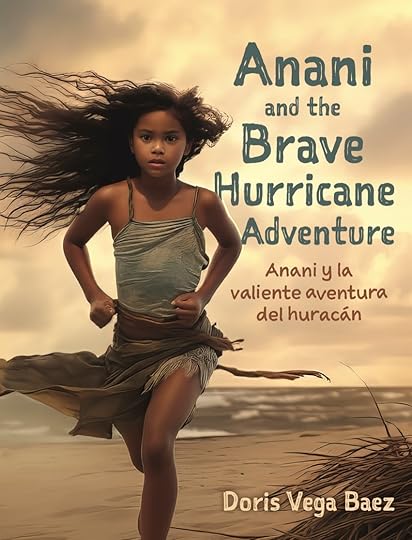
Doris Vega Baez’s children’s book Anani and the Brave Hurricane Adventure (Anani y la valiente aventura del huracán) recently became a No. 1 New Release in Children’s Ancient Civilization Fiction on Amazon, as well as No. 1 New Release in Children’s Hispanic and Latino Stories. Plus, she’s also the Author Support Team Lead for Xulon Press.
Doris spends her work days helping writers reach their goals of becoming published authors, and now that she’s a published author herself, I knew she’d have some amazing insights to share.
To read our full interview with Doris Vega Baez, visit XulonPress.Substack.com.
Q. Can you tell us a little bit about the inspiration behind Anani and the Brave Hurricane Adventure (Anani y la valiente aventura del huracán)?A. Anani and the Brave Hurricane Adventure’ (Anani y la valiente aventura del huracán) was inspired by my rich family heritage, spanning from Spain and Africa to the indigenous Taino people of the Caribbean, a culture my grandfather vividly brought to life through his stories. They valued heritage, storytelling, and children—values I hold dear and wanted to instill through my children’s book. By intertwining the Taino culture and language into the story, I aspire to celebrate and preserve this vital part of our history, ensuring that the legacy of the Taino people lives on, not just through our shared DNA, but also through the power of storytelling and the joy of learning. In doing so, I hope to instill a sense of pride, awareness, and connection to heritage in the hearts of the younger generation, all while taking them on a brave and exciting adventure with Anani.
Q. And you include both an English and a Spanish translation of your story in the book, correct? Tell us about the process of writing a book in two different languages. Were there any challenges that arose?A. Yes, the book is available in both English and Spanish. Although I have a basic understanding of Spanish, I am not fully fluent. So, I utilized tools like Microsoft Translator and Grammarly for the translation process. I aimed to keep the Spanish text simple for young readers. My family, all fluent in Spanish, played a crucial role by reviewing the translation multiple times to ensure it was accurate, uncomplicated, and made sense to the intended audience.
Q. How long did it take for you to finish writing your book?A. I dedicated a full four months to the process of writing my book.
Q. Describe your writing process. Do you outline, plan, and plot or is your writing more of a free flow of ideas?A. My writing process begins with a brainstorming session, during which I jot down any and all ideas that come to mind. From this pool of potential, I select the concept that resonates most with me and commit to developing it further. Next, I craft a basic outline to guide the unfolding of the story. With this framework in place, I then proceed to enrich the narrative ensuring a robust and engaging storytelling experience.
Finish reading our full author interview with Doris Vega Baez at XulonPress.Substack.com.Purchase a Copy of Anani and the Brave Hurricane Adventure (Anani y la valiente aventura del huracán)Anani and the Brave Hurricane Adventure (Anani y la valiente aventura del huracán) is available at the following retailers:
Connect with Doris Vega Baez
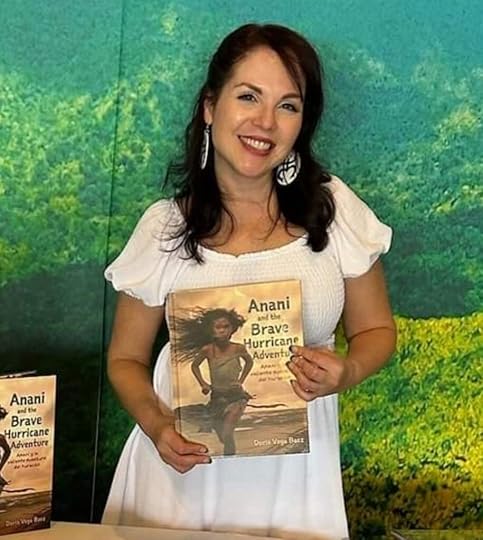
Facebook: tainoadventurebooks
Instagram: @tainoadventurebooks
TikTok: @Tainoadventurebooks
Taino Adventure Books (coming soon!)
The post Interview with Doris Vega Baez appeared first on Xulon Press.
November 10, 2023
How to Check DPI

Have you ever heard of DPI? If you haven’t, DPI stands for “dots per inch” and refers to the resolution of an image. Regarding book printing, DPI is used for printer resolution and will indicate the clarity and detail of an image when printed on paper. So, 300 DPI means that every inch of an image contains 300 dots of ink. Plus, the higher the DPI, the better the quality of the image because there will be more ink droplets tightly grouped. Understanding what it is and how to check DPI is important if you want to print images inside your self-published book.
Keep reading to learn how to check the DPI of digital photos on a Mac or Windows, why 300 DPI is important if you’re self-publishing a book, and where to get help scanning in physical photos if you need digital copies made.
How to Check DPI of a Photo on a Mac ComputerClick on the “Finder” app and locate the image you want to check DPI on.Right-click your mouse on the image file and choose “Open With” which will open up another pop-out menu and you will select “Preview.” This means you’re going to open the image file in the Preview app.Once the image opens in Preview, go to the top toolbar, and click on “Tools.”Then click on “Show Inspector.”In the screen that opens, you will choose “General Info.” It should be the first tab that appears at the top of the screen that opened.
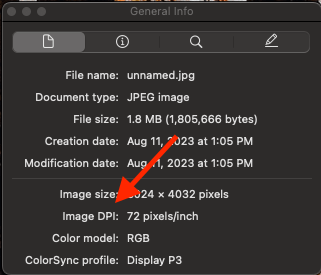
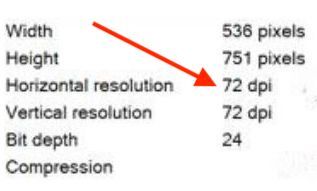
Changing the DPI of a Photo
If you find that your photo has a low DPI, you may consider changing it to a higher resolution. Keep in mind, however, that for any photo that starts at a DPI that is less than 300 and you use the directions below to increase your photo’s DPI to 300, the photo may not print at the highest quality, or it may print very small. So, it’s always best to start with a photo that is 300 DPI or higher.
How to Change the DPI of a Photo on a MacFollow the instructions below if you want to change the DPI of a photo on a Mac computer.
Click on the “Finder” app and find the image you want to check DPI on.Right-click your mouse on the image file and choose “Open With” which will open up another pop-out menu and you will select “Preview.” This means you’re going to open the image file in the Preview app.Once the image opens in Preview, go to the top toolbar, and click on “Tools.”Then click on “Adjust Size.” You’ll see the width, height, and resolution of your image.Next, uncheck the box for “Resample Image.”You will type “300” into the “Resolution” section. This automatically adjusts the width and height of your image to the proportions your image can be printed at to achieve a DPI of 300.Next, you will click on “OK.”For the last step, you will go to “File” in the top menu bar and click on “Save.”How to Change the DPI of a Photo Using WindowsIf you used the steps in How to Check the DPI of a Photo on Windows (above) and found that your photo’s resolution is less than 300, you may be wondering how you can change the DPI of your photo. Unfortunately, Windows computers do not provide users the ability to change the DPI of photos using native software.
How to Set the DPI On Scanned PhotosIf you are writing a memoir, a legacy book for your family, or your testimonial story, you may decide to include old photos in your printed book. Some of your images may be old enough that you don’t already have digital versions of them. So, if you are going to include these physical prints of photos within your book, you’ll need to scan them to your computer at 300 DPI to create a digital copy of the photo.
If you have a tech-savvy family member or friend, ask them for help scanning your photos. You can also visit Office Depot for help with scanning your images at the correct DPI for a small fee.
Scanning in photos at 300 DPI, however, may not work for faded physical photos or Polaroid-film photos. Even with the right DPI, scanning in old photos won’t improve or fix them.
If you are publishing your book with Xulon Press, we recommend speaking with our Pre-Production support team to ensure that you can correctly submit your digital images.
Why is DPI Important for Self-Publishing?Now, you may be wondering why a 300 DPI is important for printing images inside of your self-published book. When including images in books, it’s important to use 300 DPI to ensure the images are of the highest quality when the book is printed and available for sale. Submitting images for your book that have a lower DPI may result in blurry or pixelated images.
As a Xulon Press author, we recommend scheduling a virtual appointment with your Author Representative once you’ve purchased a publishing package. This appointment sets you up for a successful publishing journey. If you’re not part of the Xulon Press author family yet, call 1-866-381-2665 to get started today!
The post How to Check DPI appeared first on Xulon Press.
November 3, 2023
How to Use Grammarly as a Writer

Writing a book is not only a monumental task, but it’s also an incredibly rewarding experience. It involves meticulous attention to detail, especially when it comes to grammar, punctuation, and writing style. In today’s digital age, where technology has revolutionized the way we work, there are countless tools and resources available to assist writers in their creative journey.
One such tool that has gained immense popularity among writers is Grammarly. It’s a powerful writing assistant that helps improve the overall quality of any written work. With its advanced algorithms and comprehensive features, Grammarly detects grammar and spelling errors and also suggests enhancements to vocabulary, clarity, and sentence structure. Whether you are a seasoned author or an aspiring writer, the program may be a valuable companion in your quest for impeccable writing.
Grammarly has a user-friendly interface and provides real-time feedback to make it an indispensable tool for anyone looking to enhance their writing skills and produce polished content.
In this article we’ll discuss what Grammarly is, how writers can use it when drafting their manuscripts, and how it can’t be used.
What is Grammarly?Grammarly is an advanced writing assistant that goes beyond simple spell-check and grammar correction. Instead, it’s an AI-powered tool that helps people enhance their writing by providing real-time suggestions for improving the clarity, conciseness, and overall readability of a piece of writing. The program is available as a web application, browser extension, and even a Microsoft Word add-in, which makes it easily accessible to writers across many platforms.
How Does Grammarly Help If I’m Writing a Book?When it comes to writing a book, having a reliable writing companion like Grammarly can enhance your writing process. Not only does Grammarly assist you in crafting a polished and error-free manuscript, but it also provides suggestions and insights that may help improve your writing in various ways. Here are three ways Grammarly can improve your writing in a manuscript:
Grammar and Spelling: Grammarly’s advanced grammar-checking capabilities reduce grammatical and spelling mistakes because the program adheres to proper grammar rules. By catching common errors, such as subject-verb agreement, punctuation errors, and incorrect word usage, Grammarly helps you maintain a professional and polished writing style throughout your manuscript.Style and Tone: Writing a book involves maintaining a consistent style and tone that resonates with your target audience. Grammarly help you in achieving this goal. By providing suggestions for sentence structure, word choice, and tone adjustments, Grammarly helps you maintain a cohesive writing style. It can also identify repetitive words or phrases, which enables you to diversify your writing.Clarity and Readability: Ensuring that your book is clear and easily understandable is essential. Grammarly uses a readability analysis to determine the clarity of your writing. The analysis helps you identify difficult-to-read sentence structures, long paragraphs, and wordy sentences that may hinder readability.What Doesn’t Grammarly Help with?While Grammarly is an exceptional tool for improving your writing, it’s important to note its limitations. There are a few areas where Grammarly is not as effective:
Plot and Story Development: Grammarly primarily focuses on the technical aspects of writing, such as grammar, spelling, and style. When it comes to developing a compelling plot, crafting well-rounded character arcs, or establishing a solid story structure, however, Grammarly falls short. To ensure that these crucial elements are well-executed, it’s advisable to seek feedback from beta readers, engage in writing groups, or consult with professional editors.Contextual Understanding: While Grammarly can offer suggestions for enhancing sentence structure and word choice, it may not always grasp the specific context or intent behind your writing. So, it’s important to critically review Grammarly’s suggestions and ensure they align with your intended message. By doing so, you can maintain the integrity and clarity of your original writing.Grammarly Is Not a Replacement for Professional EditingWhile Grammarly is a powerful tool for improving the more technical aspects of your writing, it’s important to note that it shouldn’t be regarded as a complete replacement for professional editing services. As helpful as the program can be in detecting various grammar and style issues, it’s not able to identify more subtle errors or provide the same level of comprehensive editing that a skilled human editor can deliver.
We highly recommend that you consider investing in a full edit completed by a professional editor. Using an editor guarantees that your book undergoes a thorough and meticulous review, which ensures that every aspect is carefully examined and enhanced to its fullest potential.
ConclusionGrammarly is an invaluable tool for writers embarking on the journey of writing a book. Its advanced grammar checking, style suggestions, and readability analysis can help you craft a polished and engaging manuscript. However, it’s important to recognize its limitations and seek additional support, such as feedback from beta readers or professional editing, to ensure your book reaches its full potential.
The post How to Use Grammarly as a Writer appeared first on Xulon Press.
October 27, 2023
Google Docs or Microsoft Word to Write Your Manuscript

When it comes to writing your manuscript, there are two popular options to consider: Google Docs or Microsoft Word. Both word-processing tools offer unique features and benefits that can enhance your writing experience.
In this blog post, we will explore the advantages and considerations of using each platform to write your manuscript.
Benefits of Using Microsoft Word to Write Your ManuscriptMicrosoft Word has long been a go-to tool for writers. Here are some benefits of using Word to write your manuscript:
Formatting Options: Microsoft Word provides a wide range of formatting features that allow you to customize the appearance of your manuscript. Take advantage of features such as font styles, paragraph formatting, and page layout options to create a professional-looking document.Easy Submission: To submit your manuscript to Xulon Press, simply save your document as a .docx file and follow the submission guidelines provided by your Author Representative.Benefits of Using a Google Document to Write Your ManuscriptWhile Microsoft Word is a popular choice, Google Docs offers its own set of advantages for writers. Consider the following benefits if you’re deciding whether to write in Google Docs or not:
Collaborative Feedback: One of the standout features of Google Docs is its ability to facilitate collaborative feedback. You can easily work side-by-side with a co-author, send your manuscript to beta readers for their feedback, and even keep track of your changes before you submit your manuscript.Cloud-based Storage: With Google Docs, your manuscript is securely stored in the cloud. This means that you can access and edit your document from any device with an internet connection. Additionally, your work is automatically saved as you type, which reduces the risk of losing your progress.Note: If you plan to submit your manuscript to Xulon Press, keep in mind that Xulon Press accepts manuscripts in .docx format, which is the native file format of Microsoft Word. We’ve provided instructions below on how to download your Google Doc manuscript to a .docx file format for submission.
Wrote in a Google Doc? Here’s How to Submit Your Manuscript to Xulon PressWhen you’re ready to submit your manuscript to Xulon Press, follow these five simple steps to convert your Google Doc manuscript file into a Word document:
Open your manuscript’s Google document.Select “File” in the menu bar and choose “Download.”Select “Microsoft Word (.docx)” as the file format.Next, locate the .docx file of your manuscript in your “Downloads” folder.Submit the .docx file of your manuscript to Xulon Press for a Manuscript Review, full edit, or Production.What to Expect Back from Xulon Press When Your Manuscript is EditedIf you purchased a full editorial service from Xulon Press, here’s what to expect regarding your manuscript file:
Xulon Press editors use Microsoft Word documents when they edit manuscripts. This is due to the wide range of editorial tools that Microsoft offers. The track change features are more finely tuned, so there’s less chance of editors introducing accidental errors into a manuscript. The comment features are easier for both editors and authors to use, the reading score of the document is easier to find, and the editorial scoring of the document makes it easy to see if a document is in good shape.
If you wrote your manuscript in Microsoft Word, your edited copies will be returned to you in the same file format. And you can skip down to For Microsoft Word Writers.
Editing in Google documents is possible, but it works best for personal writer revisions, sharing with beta readers to receive feedback, and even collaborating with co-authors. The track change features, however, are clunky and it’s easier for writers and editors to introduce accidental errors, such as extra spaces. duplicate punctuation, and other small typos that the clunky, editing software tends to hide from our eyes.
With that said, once your manuscript has been reviewed and edited by Xulon Press, you will receive “Track” and “Clean” copies of your manuscript in Microsoft Word documents. Here’s what you’ll want to do next:
For Google Doc WritersIf you wrote your manuscript in Google Docs, know that you’ll receive “Track” and “Clean” copies of your manuscript back as Microsoft Word documents. This means the collaborative view you had in Google Docs will no longer be available to you. When you open the Google Doc version of your manuscript it will not have editor changes it in.Instead, you’re going to open the “Track” changes copy that Xulon Press sent to you. In this document, you can easily see and review all the changes the editor made.Next, you’re going to open the “Clean” copy of your edited manuscript that Xulon Press returned to you. In this document, the editor’s changes have all been accepted, and all you’ll have to do is address the comments the editor left for you to aid you in additional revisions.Remember: Since your edited manuscript is no longer in Google Docs, the editor will not see the changes or responses you might enter to their original comments. Speak with your Author Representative about adding a second round of editing if you would like your revisions to be reviewed.For Microsoft Word WritersOpen the “Track” changes copy that Xulon Press sent to you. In this document, you can easily see and review all the changes the editor made.Next, you’re going to open the “Clean” copy of your edited manuscript that Xulon Press returned to you. In this document, the editor’s changes have all been accepted, and all you’ll have to do is address the comments the editor left for you to aid you in additional revisions.If you would like your final revisions to be reviewed by your book editor, speak with your Author Representative about adding a second round of editing.Remember to resubmit your final manuscript to Xulon Press for production when all editorial revisions are complete, and you have a final version of your manuscript ready for typesetting.ConclusionMicrosoft Word and Google Docs offer valuable tools for writing your manuscript. Regardless of which program you decide to use to write your manuscript, Xulon Press will return two versions of your edited manuscript back to you as MS Word documents. The “track” copy will display every change the editor made, as well as any comments they have left for you to make final revisions on. The second document is a “Clean” copy. The editor’s changes have been accepted, and you’ll only see comments the editor left for you to aid in your final revisions.
The post Google Docs or Microsoft Word to Write Your Manuscript appeared first on Xulon Press.
October 20, 2023
5 Ideas to Promote Your Self-Published Book

Writing and producing a book is just a small part of the publishing process. Marketing and promoting the finished product are also key in ensuring you see success with your self-published book. While self-publishing has made it easier to get your work out to the world, the truth is that without proper marketing, your book may not receive the attention it deserves.
So, how can you effectively market your self-published book? Here are five easy ways that authors can use to promote their work:
1. Leverage Social Media PlatformsSocial media platforms, such as Facebook, Twitter (X), Instagram, and LinkedIn, are great tools for promoting your book. You can use these platforms to generate buzz about your book before it’s published, share snippets and teasers, and even give sneak peeks.
You can also leverage social media to connect with your target audience, build a following, and engage with readers. By doing so, you can create a community of readers who are interested in your work.
2. Create a WebsiteA website for your work can help establish your online presence and make it easier for readers to find, and purchase, your books. Include information about you, your book(s), short book excerpts, reader reviews, and links to purchase your book(s).
3. Get Reviews and TestimonialsReviews and testimonials are powerful tools for promoting your book. Positive reviews help build credibility and trust with potential readers and encourage them to check out your book.
Reach out to book bloggers, book clubs, and readers and ask them to read and review your book. You can also offer free copies of your book in exchange for reviews or testimonials. If you get positive reviews, make sure to share them on your website, social media, and other channels.
4. Attend Book Fairs and Other EventsParticipating in book events like book fairs, festivals, and conferences can be a great way to promote your self-published book. These events provide you with an opportunity to connect with other authors, as well as publishers and readers. So, you’re able to share your book with a wider audience. You can also participate in book readings, signings, and workshops, and use these events to build relationships with readers and promote your book.
5. Offer Promotions and DiscountsOffering promotions and discounts can be an effective way to incentivize potential readers to check out your book. You can offer discounts on your book, such as a limited-time offer or a percentage off a certain number of purchased copies. You can also offer freebies like bookmarks, posters, or other promotional items. These promotions can help generate buzz for your book and encourage readers to purchase your book.
ConclusionMarketing and promoting your self-published book can be a little scary if you haven’t done it before, but with the right strategies, you can get your book in front of the right audiences and generate buzz. Marketing your book is an ongoing process, so be persistent, and keep trying new strategies until you find what works best for you and your book.
The post 5 Ideas to Promote Your Self-Published Book appeared first on Xulon Press.
Xulon Press Blog
- Peter Lopez Jr.'s profile
- 8 followers



